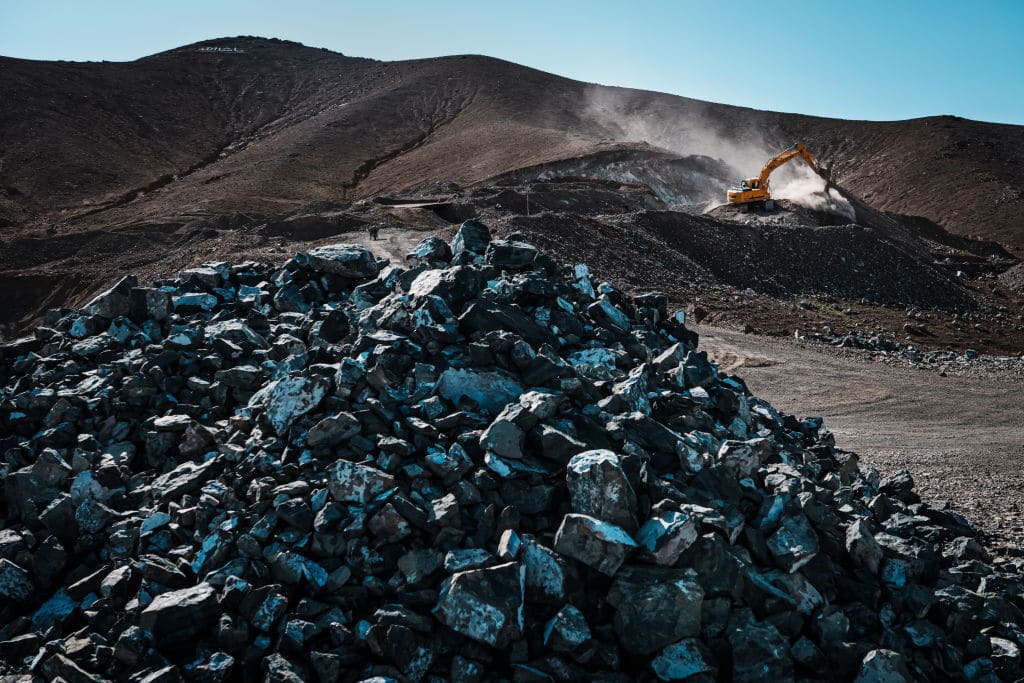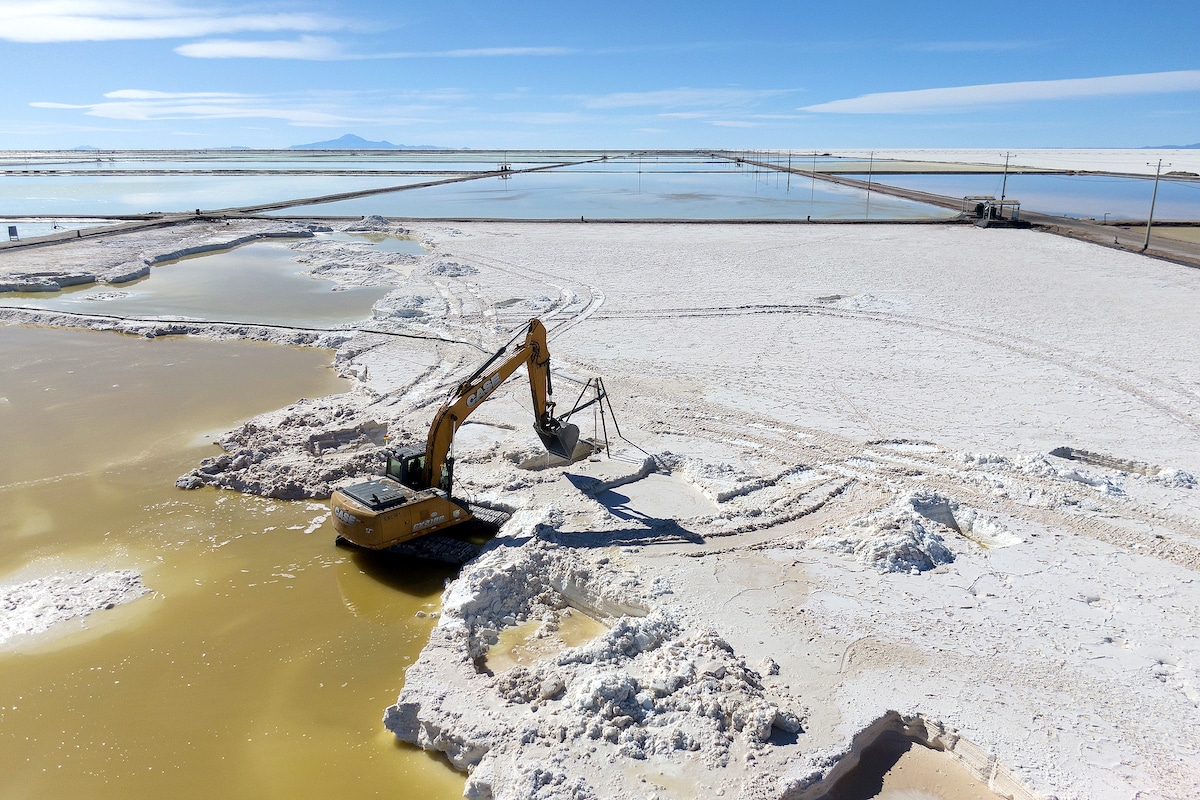Products You May Like
A backhoe digs a salt recovery pool for raw material to produce lithium at the Llipi pilot Plant in the Uyuni Salt Flats in Uyuni, Bolivia on Aug. 13, 2022. Gaston Brito Miserocchi / Getty Images
 Why you can trust us
Why you can trust us
Founded in 2005 as an Ohio-based environmental newspaper, EcoWatch is a digital platform dedicated to publishing quality, science-based content on environmental issues, causes, and solutions.
There are enough rare earth minerals to make the transition from fossil fuels to renewables, a new study has concluded. The study allays the concerns of some that the world doesn’t have enough key elements for all the wind turbines, solar panels and other components needed to make the switch to green energy and limit global heating.
Constructing wind farms, electric vehicles (EVs) and solar photovoltaic plants usually requires more of these minerals than building infrastructure for fossil fuels, the Executive Summary from the International Energy Agency (IEA) has said. An onshore wind power plant uses nine times the minerals of a gas-fired plant, and an average EV needs six times the mineral resources of a conventional vehicle. New investments have increasingly been made up of renewables, and the average quantity of rare minerals necessary for a new unit of power generation capacity has gone up by 50 percent since 2010.
More From EcoWatch
Despite their name, rare earth minerals aren’t as rare as you might think. In fact, they have been described by the U.S. Geological Survey as “relatively abundant,” according to The Associated Press.
Rare minerals aren’t only used in the equipment needed for EVs and renewable power generation — they’re also used in computer displays, LED light bulbs and smartphones.
In the study — “Future demand for electricity generation materials under different climate mitigation scenarios,” published in the journal Joule — the team of scientists looked at 20 different sources of power and the minerals and raw materials required to generate electricity, including those that are common, like glass, cement and steel.
The researchers also calculated how much pollution from mining would result and what supplies would be needed to meet worldwide targets to reduce fossil fuel carbon dioxide emissions.
“The required pace for installing new non-emitting power generation infrastructure accelerates with progressively more ambitious climate targets. In scenarios that limit global mean warming to 1.5°C above pre-industrial temperatures, future growth of non-emitting generation capacity substantially exceeds historical growth rates in electricity generation capacity,” the study said. “Sweeping transformation and growth of the power sector will require considerable inputs of emission-intensive raw materials, from critical materials such as rare earth (in particular neodymium [Nd], dysprosium [Dy]) and semi-/precious metals to structural materials such as cement, steel, and fiberglass.”
The study concluded that, while more mining for rare earth minerals will be necessary, it will not make global warming markedly worse, and there are enough minerals to meet demand, reported The Associated Press.
“Decarbonization is going to be big and messy, but at the same time we can do it,” said climate scientist at the tech company Stripe and Berkeley Earth Zeke Hausfather, who was a co-author of the study, as The Associated Press reported. “I’m not worried we’re going to run out of these materials.”
Hausfather said the power sector requires about one-third to one-half of the resources needed, but that the more complex mineral requirements for batteries is what the researchers will look at next.
Depending on how quickly the transition to renewables happens, there could be shortages of certain minerals. Tellurium, used in industrial solar farms, is one that could be cutting it close in terms of supply, but Hausfather assured that substitutions are available. Dysprosium, used in wind turbine magnets, has enough in reserves, but could come up short temporarily in the case of a rapid push toward green energy.
“The types of mineral resources used vary by technology. Lithium, nickel, cobalt, manganese and graphite are crucial to battery performance, longevity and energy density. Rare earth elements are essential for permanent magnets that are vital for wind turbines and EV motors. Electricity networks need a huge amount of copper and aluminum, with copper being a cornerstone for all electricity-related technologies,” the IEA report said. “The shift to a clean energy system is set to drive a huge increase in the requirements for these minerals, meaning that the energy sector is emerging as a major force in mineral markets.”

Mining will increase the amount of carbon emissions, which trap heat in the atmosphere, possibly by as much as 11 billion tons — one fourth of the world’s yearly carbon emissions — said Hausfather, according to The Associated Press. But Hausfather added that the escalation of carbon pollution will be more than counterbalanced by the enormous reduction of carbon emitted by the use of fossil fuels.
Even though it looks like there are enough rare earth minerals for the shift away from fossil fuels, humans still need to curb their energy use.
“Along with mining more, we should be using less,” said Rob Jackson of Stanford University, who was not part of the study, as reported by The Associated Press.
Subscribe to get exclusive updates in our daily newsletter!
By signing up, you agree to the Terms of Use and Privacy Policy & to receive electronic communications from EcoWatch Media Group, which may include marketing promotions, advertisements and sponsored content.
